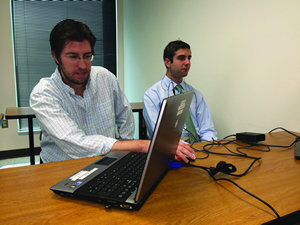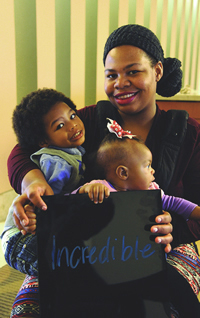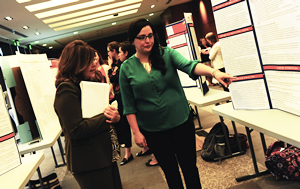Academic Excellence
UTSA named one of five certified neurofeedback U.S. training centers

At the Sarabia Family Counseling Center, the UTSA neurofeedback training program is teaching graduate students how to control the brainwaves that are linked to certain mental health conditions, including anxiety, Post Traumatic Stress Disorder and Attention Deficit Hyperactivity Disorder.
According to the National Institute for Mental Health, anxiety disorders affect about 40 million American adults age 18 years and older every year. When these disorders are triggered, abnormal or overactive brainwaves can be seen on computers via sensors used in neurofeedback techniques.
Using this feedback, specialists trained in the technique, including UTSA graduate students in training at the center, can provide treatment options that “calm” the brainwaves to a normal level and reduce symptoms. The technique also can be used to treat overactive brainwaves from other disorders such as PTSD and ADHD.
Led by UTSA lecturer and adjunct professor Mark Jones, the UTSA neurofeedback program is the only one of its kind in the nation accredited by both the Council for Accreditation of Counseling and Related Educational Programs and the Biofeedback Certification International Alliance.
In the board-certified program at UTSA, cohorts of about 12 students take part in extended laboratory courses that provide services to about 15 clinical patients a week. Treatment options to help control the brainwaves include cognitive therapy or other brain-calming exercises.
“From the student perspective, it’s a really awesome opportunity to be in a groundbreaking program,” said Michael Russo, a UTSA graduate student. “Combining technology like this with traditional counseling helps a vast amount of clients.”
The program has been a part of the Department of Counseling in the UTSA College of Education and Human Development for three years.
Before treating clients, students have the opportunity to receive their own neurofeedback. Placing 19 sensors on each other and reading their own brainwaves helps them to not only learn the process, but better understand clients.
“We all have ‘issues,’ so to speak,” Jones said. “This helps students become comfortable with their own anxieties and empathize with clients and what they’re going through.”
Neurofeedback services are provided free of charge and are performed by students under the supervision of Jones. Free counseling services also are available at the Sarabia Center, and often a combination of neurofeedback and counseling can increase effectiveness.
ONEword

"We have tried many different programs before
with very slow progress; but as soon as we came
here to the TEAM Center, we immediately saw results.
It’s just been an incredible experience."
Samyra Corbin-Hurd, Christian, and Sky
Teacher Education Autism Model (TEAM) Center
EDP students present research at annual poster symposium

More than 40 graduate students from the UTSA College of Education and Human Development’s (COEHD) Department of Educational Psychology presented their research at the third annual UTSA School Psychology Symposium and Reception on Wednesday, May 7, 2014 at the Downtown Campus.
The research presented ranged from literature reviews to statistical studies to case studies, and spanned a variety of hot topics related to the school psychology field. Much of this research was conducted during the required Practicum in School Psychology course.
Shehreen Tariq developed a case study that looked at behavioral problems in adolescent females. She used data collected over the course of six weeks to develop a mood check-in intervention for a 16-year-old student. Tariq then implemented this intervention with the student for seven weeks.
“My intervention was once a week, 45-minute counseling sessions plus a mood check-in, which required her to circle a number one through five that was attached to a smiley face based on her mood,” said Tariq. “Once she identified how she felt, she had to write out two statements about why she felt like that, and then I would require her to write a positive statement. I was trying to replace her negative thoughts with positive ones.”
This is the third year the department has hosted the symposium, which was designed to showcase student work and celebrate the breadth of research conducted in the School Psychology program.
“These students have been trained to report and provide evidence-based research and services, and that is exactly what they have demonstrated with their work,” said Norma Guerra, associate professor in the Department of Educational Psychology. “The quality of this work is a showcase and a pride point for all of us dedicated to quality services in the schools.”

